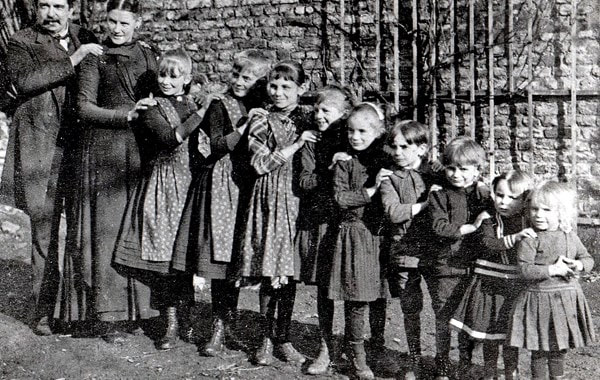Many of us are so intent on tracing our ancestors down through the generations that we don’t always pay attention to the brothers and sisters of our ancestors, perhaps not including them at all on our family tree.
But if you have an online tree with one of the big sites such as Ancestry, Family Search or FindMyPast, do consider adding these siblings to your tree – they are a key means of linking up with distant cousins who are researching the same line.
How do I find ancestral siblings?
A quick and easy way to discover how many siblings your ancestor had is to follow their childhood family through the censuses. Here, you can see that ancestor within their family setting and from the censuses, get birth year and place for brothers and sisters – clues you can then follow up to find these people through birth and baptism records and then adding them to your tree.
As always in genealogy, best practice is to check relevant records for each person mentioned (such as birth and baptism records) rather than just relying on the census as your source.
So how does this help me find present-day cousins?
By adding confirmed siblings to the relevant section of your tree, you are putting potential ancestors into a ‘pool’ of ancestral information that will be picked up by others researching the same ancestral line, typically through the hints or clues that family history websites offer to those who have a family tree on their site.
So for example, your great-grandfather Tom may have had two sisters, Elizabeth and Mary. And each of these three children went on to have families of their own. You are descended from Tom and other researchers will be descended from Elizabeth and Mary. And so, by connecting to these present-day descendants you are in touch with people with whom you share ancestors (Tom, Elizabeth and Mary’s parents). Just as you have stories and photos relating to your own family, so too will they.
The above method will also help you if you take a DNA test and are presented with a list of potential DNA matches by your testing company. Without a family tree it would be nigh on impossible to work out how you and a match are related. But factor in a tree complete with your ancestors and their siblings and your chances of finding common ground – and ancestors in common – are much higher.
Family relationships
Whether or not you’re hoping to connect with present-day distant cousins, recording siblings will also help you to understand your ancestor’s younger years within the context of their birth family. Perhaps you’ve found that your great-grandmother was the oldest of twelve siblings, making it likely that she would have been kept busy helping to look after them during her childhood and even beyond. What a contrast to the family life of an ancestor who had just one brother or sister.
It’s also fascinating to follow any siblings through the censuses, seeing the different paths that their lives took as they entered into a trade or profession, married and perhaps moved away from their home town.
Siblings can also give you clues to help you trace ancestors in the generation above. Finding the oldest child in a family should allow you search for the parents’ marriage with reasonable accuracy.
So give those brothers and sisters a place on your tree – and reap the rewards in the past and the present.

 RSS Feed
RSS Feed
